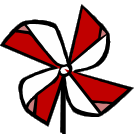
The Speed of Dark
Resource
Books
![]() Resource Books
Resource Books
Books on Autism, Developmental Disabilities, and Teaching Methods
This is by no means a complete list, even of the books on my own shelves (some of them are out on loan right now.) However, it's a list that covers most of the ideas about autism which have shaped advice to parents and approaches to therapy over the past 20-30 years.
What the autist thinks:
Grandin, Temple. THINKING IN PICTURES. Vintage Press. 1995. ISBN 0-679-77289-8
Temple Grandin's two books (this is the one you can find more easily) are presently the best book-form inside view--from the autistic perspective--of what it's like to be autistic.
What the experts think they know: handbooks, textbooks, etc.
Cohen, Donald J. and Fred R. Volkmar (eds). HANDBOOK OF AUTISM AND PERVASIVE DEVELOPMENTAL DISORDERS (second edition). John Wiley & Sons. 1997. ISBN 0-471-53242-8
The "Handbook" is what your doctors and therapists know, if you're lucky. If not, you may be dealing with people whose knowledge is barely out of the dark ages of Bettleheim and "refrigerator mothers" (the psychoanalytic approach to autism, treating it as infant schizophrenia.)
It also helps to look in the American Psychiatric Association's DSM-IV (available in many large bookstores, the Diagnostic and Statistical Manual.) That's outdated compared to Cohen and Volkmar, but lots better than earlier stuff.
Frith, Uta. AUTISM: Explaining the Enigma. Blackwell. 1989. ISBN 0-631-15833-2
Frith is, in my humble opinion, an idiot, but her "Theory of Mind" is pervasive. A little experience with computer programming might have given her better theories. (Again, my opinion.) More up-to-date therapists may have bought it wholesale; you need to know it.
Sacks, Oliver. AN ANTHROPOLOGIST ON MARS. Vintage Press. 1995. ISBN 0-679-75697-3
Sacks is fascinating always--he talks about autists he's worked with in several of his books, but this one is all about autism.
For parents: what the experts are telling you:
Quill, Kathleen Ann. TEACHING CHILDREN WITH AUTISM: Strategies to Enhance Communication and Socialization. Delmar Publishing. 1995. ISBN 0-8273-6269-2
Koegel, Robert L. and Lynn Kern Koegel. TEACHING CHILDREN WITH AUTISM: Strategies for Initiating Postive Interactions and Improving Learning Opportunities. Paul H. Brookes Publishing. 1995. ISBN 1-55766-180-4
Hart, Charles. A PARENT'S GUIDE TO AUTISM: Answers to the Most Common Questions. Pocket Books. 1993. ISBN 0-671-75099-2
Powers, Michael (ed). CHILDREN WITH AUTISM: A Parent's Guide. Woodbine House. 1989. ISBN 0-933149-16-6
Sperry, Virginia Walker. FRAGILE SUCCESS: Nine autistic children, childhood to adolescence. Archon. 1995.
Parents and Families write about their experience:
Park, Clara Claiborne. THE SIEGE: The First Eight Years of an Autistic Child. Little, Brown. 1982. ISBN 0-316-69069-4
Park, Clara Claiborne. EXITING NIRVANA: A Daughter's Life with Autism. Little, Brown. 2001. ISBN 0-316-69117-8
Park's was the first really sensitive and literate book from personal experience about autism; it can be important to understand what parents used to have to deal with in terms of theory and therapy. It's possible to see in her second book the same sensitivity and also (because she's a good observer though not a great interpreter) what the effects of the long-term deficits are.
Hart, Charles. WITHOUT REASON: A Family Copes with Two Generations of Autism. Signet. 1989. ISBN 0-451-16940-9
This is a sad book, and you need to keep in mind the timeframes we're talking about. Hart is clearly a less gifted observer than Park (my copy of this is full of marginal notes with exclamation points, many of them on the order of "Idiot!" and "Grrrrr!!!" However, it is an important record of how the treatment and attitudes have changed since his brother's childhood.
Greenfeld, Josh. A CHILD CALLED NOAH. Harcourt Brace Jovanovich. 1970.
Greenfeld, Josh. A PLACE FOR NOAH. Harcourt Brace Jovanovich. 1978
Greenfeld, Josh. A CLIENT CALLED NOAH. Harcourt Brace Jovanovich. 1986
The Greenfeld books are angry, bitter, and difficult. Never read them on a bad day. But if you or anyone you know thinks Lovaas is a saint...you need to see how he treated this child when he was first going into work with autistic children. Behavioral modification therapy is one thing; Lovaas's rigidity is another whole banana pie.
Books not aimed at autism, but very pertinent:
Gardner, Howard. FRAMES OF MIND. Basic Books. 1985. Gardner has the most accessible books on the "modular" theory of how the brain works.
Pinker, Steven. LANGUAGE LEARNABILITY AND LANGUAGE DEVELOPMENT. Harvard University Press. 1984, 1996.
Rogoff & Lave, eds. EVERYDAY COGNITION. 1984. How real-life people think through common practical problems, and how this kind of thinking is developed in different societies.
Rogoff, Barbara. APPRENTICESHIP IN THINKING. Oxford University Press. 1990.
Pryor, Karen. DON'T SHOOT THE DOG. (My copies are all out on loan, so I don't have the publication data.) This is the best practical guide to using positive reinforcement behavioral shaping, in my opinion. It is brief, clear, and witty; it suggests multiple approaches to various problems, and gives examples of creative use of these techniques. Pryor's earlier book, LADS BEFORE THE WIND, is also good; she talks about her work with whales, dolphins, and other animals.
Top of page